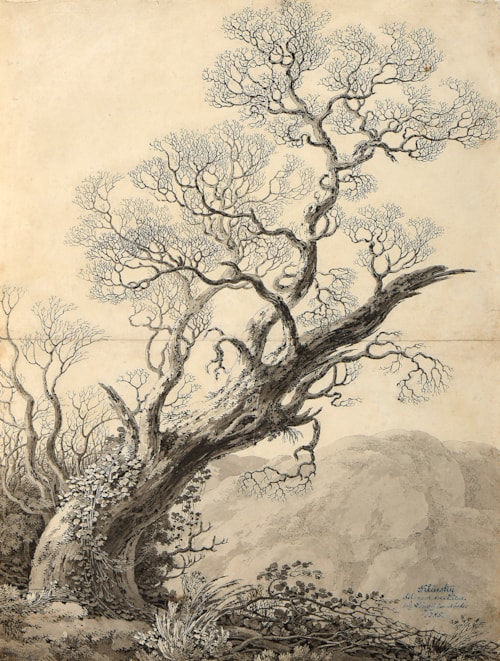
Johann Gottfried KLINSKY
Dresden-Neustadt 1765 - Ulm 1827
Biography
Johann Gottfried Klinsky (sometimes Klinski) was mainly active as an architect, with a particular interest in Romantic garden architecture. He studied at the Akademie in Dresden under the history and portrait painter Christian Gottlieb Mietsch, before turning to the study of architecture, training under the architects Friedrich August Krubsacius and Gottlob August Hölzer. His architectural designs were exhibited at the annual art exhibitions of the Dresden Akademie in 1779, 1781, 1782, 1787 and 1789, when he left Dresden to work as a drawing teacher in Prague. Klinsky spent two years in Rome between 1793 and 1795 before returning to Dresden. In 1798 he was recommended as an architect for a church at Uhyst in Saxony as ‘an experienced and able man in these things’, although this project never seems to have been undertaken. He also provided drawings for Wilhelm Gottlieb Becker's Taschenbuch für Garten Freunde, a guide for gardeners, published in 1795, and four years later himself published Versuch über die Harmonie der Gebäude zu den Landschaften (Essay on the Harmonious Placement of Buildings in Landscapes), illustrated with five aquatints. This was followed by his contribution of several garden designs to the Collection de Nouveaux Bâtiments pour la Décoration des Grands Jardins et des Campagnes, published in Paris in 1802. Klinsky produced a number of such series of printed works.
Klinsky taught lessons in architecture at the Dresden Akademie between 1806 and 1811. Although no buildings designed by him seem to have survived in the city, a monument to the poet Friedrich Schiller in Mechau, dated 1807, and another, dedicated to the poet Friedrich Gottlieb Klopstock, are recorded in prints. In 1807 and 1808 he showed architectural drawings at the Dresden Akademie exhibitions. In 1811 Klinsky settled in Stuttgart, where he had been appointed court architect by King Friedrich I of Württemberg. There he was particularly in demand as a designer of country houses and garden architecture, and produced sketches and designs for pleasure buildings for the park of the castle of Hohenheim in Stuttgart, and elsewhere in the area. As he had in Dresden, Klinsky also continued to exhibit drawings of buildings at the yearly art exhibitions in Stuttgart, including drawings of the gothic Ulm minster, intended for a planned volume of illustrations of the church; at least one view of the Minster at Ulm by the artist was reproduced as a lithograph. A self-portrait by Klinsky is included in the so-called Carus Album of 18th and 19th century artist’s portraits, today in the collection of the Städtische Galerie in Dresden.
As a draughtsman, Klinsky produced mainly architectural drawings and views of buildings. In 1788, for example, he made views of the old and new Kreuzkirche churches in Dresden, while in 1792 he produced watercolours of the castle of Freudenstein in Freiberg and the nearby Schloss Augustusburg; both works are today in the collection of the Landesbibliothek in Dresden.


